The key here is to use a Collection. In your case, you want to make a PatchCollection.
Matplotlib optimizes drawing many similar artists through using collections. It's considerably faster than drawing each one individually. Furthermore, the plot won't contain thousands of individual artists, only one collection. This speeds up many other miscellaneous operations that need to operate on each artist every time the plot is drawn.
scatter actually is much faster than your current approach, as it will add a collection instead of separate artists. However, it also draws markers with a size that isn't in data coordinates.
To get around that, you can use the same approach scatter does, but create the collection manually.
As an example:
import numpy as np
import matplotlib.pyplot as plt
import matplotlib.collections
num = 5000
sizes = 0.2 * np.random.random(num)
xy = 50 * np.random.random((num, 2))
# Note that the patches won't be added to the axes, instead a collection will
patches = [plt.Circle(center, size) for center, size in zip(xy, sizes)]
fig, ax = plt.subplots()
coll = matplotlib.collections.PatchCollection(patches, facecolors='black')
ax.add_collection(coll)
ax.margins(0.01)
plt.show()

This renders quite smoothly for me. Just to prove that the circles are in data coordinates, note what happens if we zoom in on a narrow rectangle (note: this assumes that the aspect of the plot is set to auto):

If you're really focused on speed, you can use an EllipseCollection as @tcaswell suggested.
An EllipseCollection will only make one path, but will scale and translate it at draw time to be in the places/sizes you specify.
The downside is that while the size can be in data coordinates, the circle will always be a circle, even if the aspect ratio of the plot isn't 1. (i.e. the circles won't stretch as they do in the figure above).
The advantage is that it's fast.
import numpy as np
import matplotlib.pyplot as plt
import matplotlib.collections
num = 5000
sizes = 0.4 * np.random.random(num)
xy = 50 * np.random.random((num, 2))
fig, ax = plt.subplots()
coll = matplotlib.collections.EllipseCollection(sizes, sizes,
np.zeros_like(sizes),
offsets=xy, units='x',
transOffset=ax.transData,
**kwargs)
ax.add_collection(coll)
ax.margins(0.01)
plt.show()

Notice the difference as we zoom in on a similar region to the second figure. The circles get bigger (the size is in data coordinates), but remain circles instead of becoming elongated. They're not an accurate representation of a circle in "data" space.

To give some idea of the time difference, here's the time to create and draw a figure with the same 5000 circles with each of the three methods:
In [5]: %timeit time_plotting(circles)
1 loops, best of 3: 3.84 s per loop
In [6]: %timeit time_plotting(patch_collection)
1 loops, best of 3: 1.37 s per loop
In [7]: %timeit time_plotting(ellipse_collection)
1 loops, best of 3: 228 ms per loop




